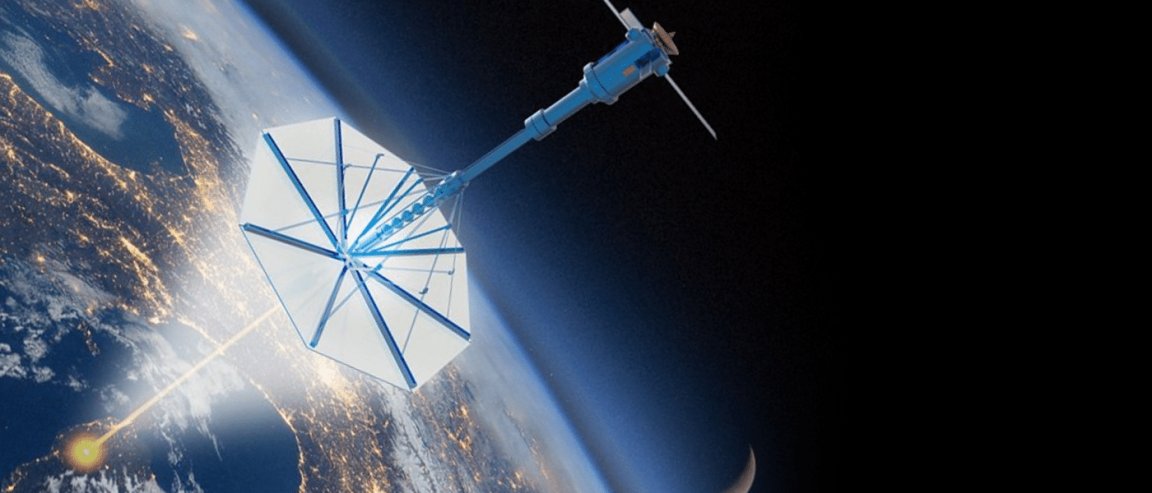
Riding to the Planets on a Beam of Light
The clever boys and girls at NASA are always dreaming up new ways to circumvent the biggest obstacle to effective space travel: the speed barrier. Space is big, as you might have heard—and it takes a long time to get around.
It’s about three days to the Moon, which isn’t too bad; but Mars is another story altogether. With current methods of chemical rocket propulsion—the same that have been used for some three-quarters of a century—a voyage to the Red Planet would take about five months.
But a team of NASA scientists, headed by Philip Lubin of the University of California, Santa Barbara, have envisioned a different means of getting about space—one that requires nothing more than a beam of light. Called “photonic propulsion,” it requires little more than a solar sail of ultralight material, which is pushed along by energy beamed from an orbital laser array.
Lubin’s team was awarded a NASA Innovative Advanced Concepts (NIAC) grant, to the tune of $100,000, to begin the planning and testing phase of the project. It is being called—with a typically NASA-esque acronymic flair (though in this case to somewhat unfortunate effect)—Directed Energy Propulsion for Interstellar Exploration (DEEP-IN).
The idea is to yoke a small probe to a solar sail, orbit a laser array, and push the probe toward its destination at speeds far in excess of anything we can attain these days. Lubin estimates a probe weighing only a few hundred pounds could be accelerated to Mars using this method in just three days. Scale the technology up from unmanned probes to manned vessels (no mean feat), and we could be talking about a journey to Mars in a month—one-fifth of the travel time via conventional techniques.

New Paths to the Stars
As we begin to seriously prepare for our first journey to Mars, there’s been a flurry of research into novel propulsion methods to help get us there. One very promising avenue leads to the VASIMR nuclear electric thruster, which opens up the possibility of a journey to the Red Planet in only 40 days. The technology is still in development, and has some key challenges—most notably building a space-capable nuclear reactor to power the engine array—but it seems to be one of the most immediately realizable technologies for fast interplanetary travel.
Other ideas have been mooted, including Charles Bombardier’s somewhat fanciful Solar Express concept, which could—theoretically—reach something like 1% of the speed of light. The peculiar “EM drive,” meanwhile, still makes headlines; although, barring a significant contravention of the laws of physics, it seems destined to follow cold fusion into the dustbin of scientific history.
So it seems photonic propulsion is one of the better options we currently have. If the technology can be scaled up and made to endure the rigors of frequent space travel, it might just be our best hope for colonizing the Solar System; when it comes to reaching for the stars, it might just be the only option we have for a very long time.